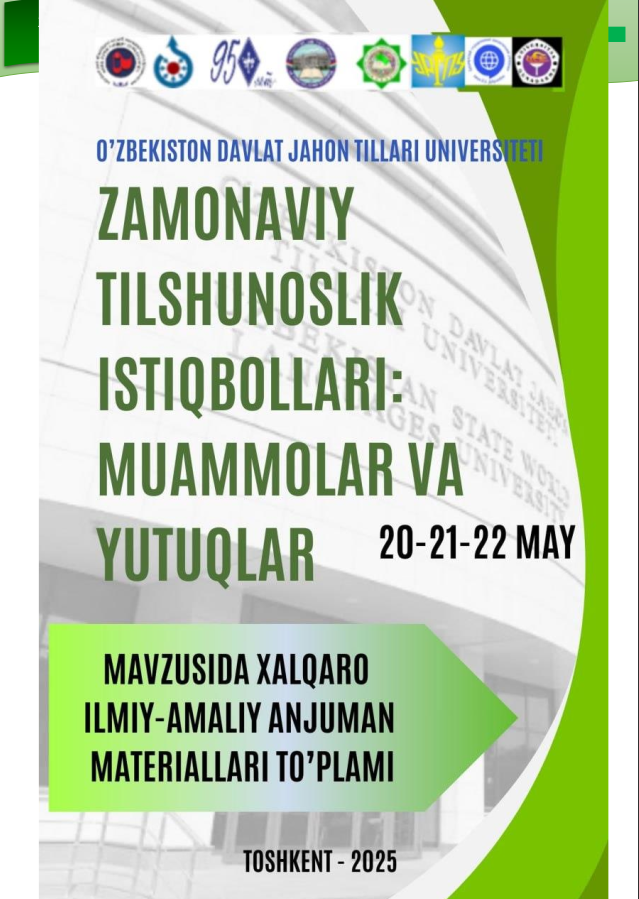DIFFICULTIES IN PERCEIVING AND COMPREHENDING A CULTURALLY EMBEDDED FOREIGN TEXT
https://doi.org/10.5281/zenodo.15590398
Kalit so‘zlar
foreign linguocultural text; cognitive linguistics; reflective understanding; frame semantics; text perception; interpretation strategies.Annotasiya
This article explores the peculiarities in perceiving and comprehending foreign linguocultural texts, focusing on the comparative analysis of Russian, English, and Uzbek. It examines how these languages reflect unique ethnocultural models and communicative frameworks, highlighting cognitive and cultural challenges in text interpretation. Drawing on frame semantics and reflective understanding, the study shows that comprehension involves not only linguistic competence but also culturally embedded conceptual structures and interpretive strategies. The research emphasizes that while linguistic systems differ significantly, reflective reality allows individuals to overcome barriers and access deeper meanings within foreign texts.
Foydalanilgan adabiyotlar ro‘yhati
Bogin, G. I. (1986). Models of Understanding in Linguistics. Tula: Tula State Pedagogical Institute Press.
Bogin, G. I. (2000). Reflective Linguistics: The Reality of Text Understanding. Tula: Tula State Pedagogical Institute Press.
Fillmore, C. J. (1988). The Mechanisms of "Frame Semantics" and the Semantic Analysis of Grammar. In U. Eco, M. Santambrogio, & P. Violi (Eds.), Meaning and Mental Representations (pp. 111–137). Bloomington: Indiana University Press.
Grenoble, L. A. (2003). Language Policy in the Soviet Union. Dordrecht: Kluwer Academic Publishers.
Landau, J. M., & Kellner-Heinkele, B. (2001). Politics of Language in the Ex-Soviet Muslim States: Azerbayjan, Uzbekistan, Kazakhstan, Kyrgyzstan, Turkmenistan and Tajikistan. Ann Arbor: University of Michigan Press.

